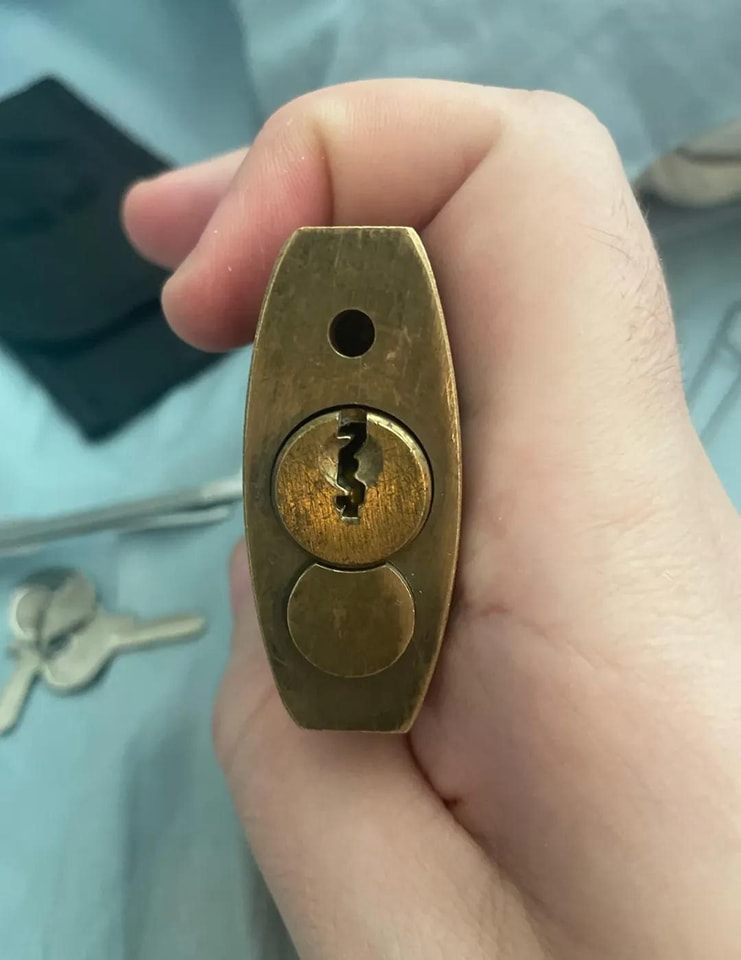If you’ve ever examined a padlock closely, you may have spotted a couple of tiny holes at the bottom. At first glance, these small holes might seem unimportant or just part of the design, but they actually serve a meaningful purpose. Often referred to as “pin holes,” these little openings play a big role in making sure your padlock stays functional, reliable, and long-lasting.

Though they’re small and easy to miss, these holes help protect your padlock from damage and even make maintenance a whole lot easier. Knowing what these holes are for can help you better understand how your lock works and how to keep it in top shape for years to come. One of the most important reasons for these holes is drainage. Picture a padlock used outdoors, exposed to the elements. Whether it’s rain, humidity, or even splashes from a nearby hose, water can easily seep into the internal components of the lock. If that moisture has nowhere to go, it can become trapped inside, leading to rust, corrosion, and mechanical failure over time. The pin holes act as drainage channels that allow this water to escape instead of pooling inside.
Without these holes, your padlock would be far more vulnerable to water damage, which could compromise its strength and security. Thanks to this simple but smart design, padlocks can remain reliable even in damp or rainy environments, making them ideal for everything from backyard gates to storage units. Beyond preventing water buildup, those little holes also help when it comes to keeping your padlock running smoothly. Locks are mechanical devices, and over time, they’re bound to get a bit sticky or stiff, especially if they’ve been exposed to dirt, dust, or general wear and tear. This is where lubrication comes in—and pin holes make it easy.
If your padlock ever gets stuck or hard to open, you can use the holes to apply lubricant directly into the inner workings of the lock. All you need is a can of lubricant with a thin straw nozzle. Insert the straw into the hole, give it a quick spray, and allow the lubricant to reach the lock’s internal mechanisms. This simple action helps reduce friction between moving parts, clears away debris, and restores smooth operation. Instead of throwing out a stubborn lock or struggling with it every time you need to open it, a little maintenance through those holes can get it working like new again. Now that you know the pin holes allow for both drainage and lubrication, it’s worth understanding why regular lubrication is so important for padlock longevity.
Padlocks are often exposed to harsh conditions—dust, dirt, grime, and moisture can all find their way inside and cause the components to grind together or seize up. When metal parts rub together without proper lubrication, it creates wear and tear, which eventually leads to malfunction. By applying lubricant regularly through the pin holes, you’re not just fixing a temporary problem—you’re helping to prevent long-term damage. Lubrication forms a protective layer that shields the internal parts from rust and helps ensure that the lock continues to function as intended. It improves performance, keeps everything moving smoothly, and extends the overall life of the lock. So, the next time you pick up a padlock and notice those tiny holes at the bottom, remember they’re more than just random design features. They’re built-in tools that help your lock stay dry, well-lubricated, and in good working condition. Whether you’re using a padlock for securing a shed, a locker, a gate, or a toolbox, a little routine care—like draining out moisture and adding lubricant through the pin holes—goes a long way. Taking a few minutes now and then to maintain your lock can save you money and frustration down the road. Those small holes may be easy to overlook, but they’re doing a big job behind the scenes, helping your padlock stay strong, secure, and dependable for years to come.





